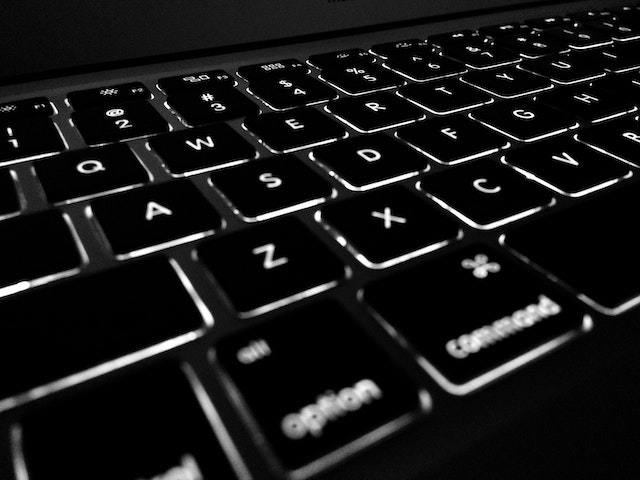German is a fascinating language, full of quirks and oddities, as are all languages. Below I have clarified and explained some of the nuances of the German language. Have you ever wondered why all German nouns are capitalised, or why Germans – and Europeans – use commas for the decimal point? Although these are not “make or break” pieces of information, they are the small things that help build your proficiency with language learning.
Of course, all other languages also have their own quirks, including English.

What Percentage Of The World Speaks German And Where Else Is It Spoken?
There are about 100 million speakers of German in the world. That is people who use German as their main language of communication. This doesn’t take into account people like you, who are learning the language but may not use it as your primary language of communication. About 80% of this 100 million are centred in and around Germany, as well as Austria, Belgium, Lichtenstein, Luxembourg, and Switzerland.
There are pockets of German-speaking communities in other areas of the world as well, however, those speakers are much more the minority in those countries. Some of those countries include Brazil, Bosnia and Herzegovina, Czech, Denmark, Hungary, Italy, Kazakhstan, Namibia, Poland, Romania, Russia, Slovakia and Ukraine.
This just goes to show that although you may have thought that German was only spoken inside Germany, you may just meet a German speaker living in another country as well. This also gives you an idea of the countries and areas that have had a history with Germany and the movement of German speakers to other countries throughout time.

Is German Spoken In France?
Although France and Germany share a large border together, the two languages are not widely spoken in the opposite country. Although French is a reasonably common language learnt in German schools, it is not widely used by citizens within Germany. In the same way, German is not a language that is widely used in France. Although it may be learnt in schools, towns inside France do not use German as a primary language.
Despite this, there is a language called Alsatian that is spoken in a region of France, which is on the border of South West Germany and Switzerland. Unfortunately, this language is in decline, as younger generations are speaking much more French than Alsatian, which is spoken more commonly by older generations.
The reason that this region of France has its own language, is that the region has changed hands between Germany and France several times over the last 400 years. As a result, the language spoken there has been influenced by both languages at different times, creating the mixed language that is now used.

Where Is The Purest Form Of German Spoken?
Specifying where or who speaks the purest form of a language is difficult. Language is constantly evolving and is influenced by other languages. New words are constantly being created and adopted into other languages. Examples of this are “facetime, skype, and chillax”.
Finding the purest form of English has similar issues; especially as many countries use English as their official language. Imagine an American, Australian and Scottish person trying to speak to each other, with their own accents and perhaps different words to mean the same thing. Do you swim in bathers, togs or swimmers? After getting groceries, do you put them in your trunk or boot? Which version of English is most pure? It depends on what your perspective is on English.
Furthermore, we rarely use language with perfect grammar. New words are created, grammar is ignored, and the meaning of words changes over time. Because of this, it’s quite hard to say where the purest form of a language is used.
Similar to English speakers across the world, German speakers in different parts of Germany will have trouble understanding each other, due to the evolution of language as well as accents, so finding the version of German that is most correct becomes difficult. What we can do instead, is try and pinpoint the most traditional version of German that is being used today.
It could be argued that the most traditional German language is Hanover in North Germany, though even this is difficult to confirm. Hanover citizens spoke Low German, (which you can read more about here). As Low German transitioned to Standardised German, the German used in Hanover remained. While other parts of Germany have taken this language and made changes to it, creating their own dialects.

Why Are German Nouns Capitalised?
While the English language only capitalises proper nouns, such as names of people and places, German writing capitalises every noun. This includes the names of people and places, but also things. This means that the word for mother cat and tree are all capitalised in German. This is quite a bit different to English I can take a bit of getting used to when first learning German, with many nouns missing a capital letter at the start.
The reason for this capitalisation was initially to emphasise the importance of nouns. Historically, this was to emphasise the importance of religious things, however as time went on this changed to include all nouns.
There is actually some benefit to this as well, particularly for German learners. Although not common, there are words that are spelt the same but have different meanings in different contexts. Examples of this are liebe vs Liebe (dear, sweet vs the love), Dichter vs dichter (the poet vs more dense). In these cases, having the capitalised word to signify and noun can help differentiate between the two words, at least in written German.

Is The ß (eszett/sharp s) Still Used And How Is It Typed?
German has a few special letters in its language, which are ä, ö, ü, ß. The benefit of these symbols is to help with pronunciation. The letters with dots (called umlauts), signal that the letter should be pronounced as if there is an ‘e’ afterwards (ae, oe, ue) which is how they are pronounced. The ß symbol called a sharp S, or eszett, signals that the “s” pronunciation should be longer, while a word with “ss” is shorter.
The eszett is still used though less and less commonly in Germany and in Switzerland, it is not used.
If you needed to type it, the easiest way to do it in Windows is to hold alt + 225 (on the Numpad), and for Mac use alt/option + s. The alternative is to search for the symbol on the internet to copy or insert a symbol from Microsoft Word.

Which Came First, German Or English?
Both English and German are from the Germanic language family, meaning that neither German nor English came first. English didn’t come as an offshoot of German, and vice versa. That being said, both languages have changed dramatically since their origin, and are no longer the same language as they once were. If you have ever tried reading Shakespeare, you’ll understand the concept of language change.
There is now a lot of crossover between the two languages. Words from German have infiltrated into English (eg Kindergarten and Angst), while words from English is also been adopted into German (eg e-mail and download). This will probably become more and more frequent, as the words for new objects and actions that didn’t previously exist don’t tend to get translated into foreign languages, rather than the original word staying the same.

Why Are German Quotation Marks So Different?
Depending on the age of the text you are reading, you may find German quotation marks in the form of „“ or perhaps »« or its opposite, «». Each of these forms is completely authentic, and in some ways seems a bit nicer than the English 66 and 99 apostrophes.
The reason that German apostrophes are as they are, is simply because that is the way that they developed over history, and became the standardised method of use. There does not appear to be a more detailed or nuanced answer than that, however, it is interesting to note that many European countries use the same or similar apostrophes as German. Before quotation marks were used, books would simply name the speaker, or change the font used, to show the words were being spoken or referenced from a particular person.
One benefit however of these apostrophes is that it is very clear when quotations start and end. Sometimes seeing words that have a double or single ” next to them in English writing does not signify well enough if you have read the beginning or the end of a quote.
Although in some cases you will find English quotation marks used in German writing, it is more common to find one of the other quotation marks used.

Is There An Adjective Order In German?
Although you may be unaware of it, or unable to define an adjective order in English, there is an adjective order. Don’t believe me? Would you say “Big Red Dog” or “Red Big Dog”? Or, to include a few more adjectives, think about which of these descriptions sounds more correct to you.
The red old tall dragon walked into a bar.
The red tall old dragon walked into a bar.
The old red tall dragon walked into a bar.
The old tall red dragon walked into a bar.
The tall old red dragon walked into a bar.
The tall red old dragon walked into a bar.
There’s an adjective order in English, which goes like this: opinion, size, age, shape, colour, origin, material, and purpose. Strictly speaking, “The tall old red dragon walked into a bar” is the most grammatically correct sentence. You might be able to slide other sentences as well, but a part of you might think there’s something wrong about it, without being able to say what exactly.
If this is news to you, don’t worry – it’s not exactly something kids learn in class, it’s something native English speakers learn naturally.
Unlike English, German doesn’t have an adjective order that is quite as rigorous as English. That being said, however, there are some nuances to be aware of. If there is more than one adjective that describes an object, the first adjective is the one that most distinguishes that object. An example of this is if you were to talk about three blue towels, but yours is striped, you would say the striped blue towel (das gestreifte blaue Handtuch), rather than the blue striped towel (das blaue gestreifte Handtuch).

Do Germans Ever Get The Gender Of Nouns Wrong?
Throughout your time learning German, you are sure to be confused and annoyed by the gender system. This is particularly true if you are a native English speaker and you have not had to previously bother wondering if a desk is male, female or neutral.
Have you ever perhaps wondered if German speakers themselves can be equally confused? While it is possible for native German speakers to use the incorrect gender, it is extremely uncommon. There are two cases in which an incorrect gender would be used by a German speaker. When a German speaker changes the noun they were going to say halfway through their sentence, or when a loan word is used.
Unfortunately for learners of German, you wonder if native Germans suffer from the same problems, the short answer is that they do not.
The first instance of a native incorrectly gendering nouns is when they change the noun they wish to say, not because the German has forgotten the correct gender, but rather because they changed what they were going to say.
The second instance, when a loan word is used, could be considered to be a German making a mistake. Unfortunately, the mistake is not with a strictly German word. You can read more about this in a previous article here, however, the long and the short of it is that when in doubt use ‘das’ as the article.

Why Is The Decimal Symbol A Comma In German?
You may be looking for prices or figures of populations on a German site, or in a German store and notice something odd: the decimal is a comma instead of the full stop you were expecting. The comma that you see in German – and European – numbers are unrelated to commas used in speech. While a comma in speech is to separate clauses, a comma in a numbering system can indicate a decimal point.
In general, English and German use of the decimal and comma for numbering systems is swapped. For example, €19,99 and $19.99 mean the same thing. This use of decimal systems is the same for much of Europe, not just Germany.
This can be quite odd when first seen and can be even more confusing when looking at larger numbers. In these cases, numbers are grouped and separated by a decimal in German, while English writing uses commas. For example, the German cost €345.903 is the same as the English $345,903.
One way any confusion can be avoided for larger numbers is by simply using a space instead of any comma or decimal such as €345 903 and $345 903.
However, if there were cents at the end of this cost, German writing would use a comma while English would use a decimal. The same number again would therefore be €345.903,50 while in English this would be $345,903.50.
One final point to note is separating multiple numbers. If commas are used in place of the decimal, and also used to separate items in a list, writing multiple numbers in a row can get confusing. A way around this is to use a semi-colon instead. For example, 7,3, 8,4, 9,8, 10,1 compared to 7,3; 8,4; 9,8; 10,1.
- The Ultimate German Pronunciation Guide

- Why German Literature is Essential for Language Learning

- Peculiar Facts About The German Language You May Not Know

- Why Are German Students So Good At Languages (Explained)

- Is The German Language Dying?

- How Easy Is It To Live In Germany Without Knowing German?

- 5 Great Reasons Why The German Langauge May Be Great For You To Learn

- 5 Interesting Aspects Of The German Language You Should Know

- Is German A More Efficient Language Than English? (Answered)










